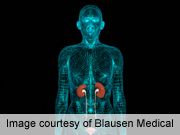Article
Use of Thiazide Medications Is Associated with Increased Risk of Developing Hyponatremia
Population-based study finds patients who use thiazide medications face a nearly fivefold increased risk of developing hyponatremia compared to patients who do not use these medications.

The use of thiazide diuretics is known to be associated with increased risk of hyponatremia in patients. The authors of “Thiazide-Associated Hyponatremia: A Population-Based Study,” published in the American Journal of Kidney Disease, sought to determine the extent of this risk by following a cohort of hyponatremic patients from the Rotterdam Study, “a prospective cohort study that started in 1990 in Ommoord, a suburb of Rotterdam, among 10,994, men and women aged 55 and over.”
Investigators also “analyzed differences in thiazide-associated hyponatremia between men and women and between different categories of age, body mass index (BMI), daily thiazide dose, and estimated glomerular filtration rate.”
For the study, patients were considered to be hyponatremic if their serum sodium level was ≤135 mmol/L. Patients with sodium level of 130-135 mmol/L were labeled as having mild hyponatremia, sodium level of 126-130 mmol/L was moderate hyponatremia, and sodium level ≤125 mmol/L was severe hyponatremia.
At baseline, 718 patients used thiazides, and 2,738 participants initiated thiazide therapy during follow-up. The authors reported that, of the 522 participants who developed hyponatremia, nearly one-third (32.4%) “were exposed to thiazide diuretics at the time of hyponatremia.”
Patients who used thiazide medications had a nearly 5 times greater risk of developing hyponatremia compared to patients who did not use thiazides.
The authors reported that “the risk of mild hyponatremia was more than 4.5 times higher in thiazide-exposed individuals; risks of moderate and severe hyponatremia were both 8 times higher in individuals exposed to thiazides.”
Age, BMI, and estimated glomerular filtration rate all “significantly modified” the risk of developing thiazide-associated hyponatremia, with age-associated risk decreasing with older age (patients age 55-65 had 8 times the risk of developing hyponatremia compared to non-thiazide users of the same age, while patients age 85 and older had 4 times the risk).
Based on these results, the authors wrote “Thiazide use is associated with a substantially increased risk of hyponatremia. Age and BMI significantly influenced the thiazide-associated risk of hyponatremia.”
For more on the topic of diuretic-induced hyponatremia, watch this video produced by Nephrology On-Demand Productions, “the evidence-based online classroom in nephrology powered by the East Caroline University Division of Nephrology and Hypertension.”



